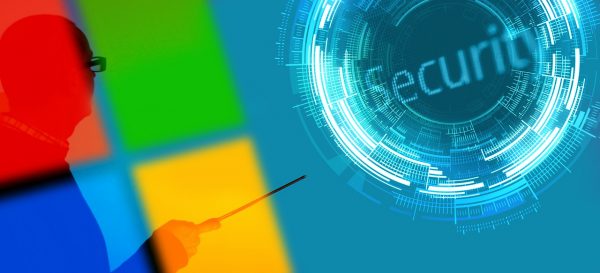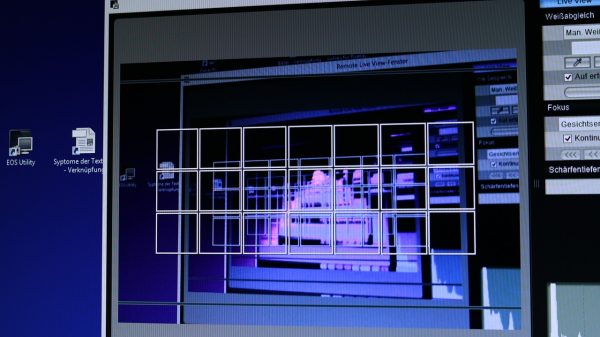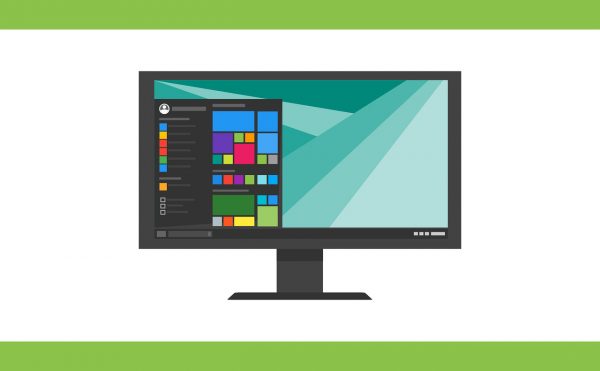But given the negative reputation surrounding Windows Defender over the past few years, many people are left wondering if the improved version is any better. Let’s find out what the new and improved Windows Defender can do, and whether it’s worth getting another antivirus.
What is Windows Defender?
Windows Defender is Microsoft Windows’ built-in anti-malware software. The software was first released as a downloadable, free anti-spyware program for Windows X computers. Microsoft later moved the software with Windows Vista and Windows 7 computers. Microsoft began to switch the control of Windows Defender out of its original client during the debut of Windows 10, renaming the software Windows Defender Antivirus. They did this as a means to distinguish the software from Defender Security Center. The new Windows Defender is the next-generation protection component of Microsoft Defender for Endpoint. The protection it offers makes use of machine learning and big-data analysis.
Windows Defender: From Bad to Average Reputation
Windows Defender is the default antivirus protection that came with all Windows 8 to 10 computers. Microsoft would have preferred Windows Defender to be the only antivirus software that consumers will ever need. But in reality, many people still turned to third-party antivirus software. People seem to have the perception that Microsoft Defender isn’t as reliable or effective as premium third-party antivirus options. And some still believe that it remains just as unreliable as it was in the past. Many people were dissatisfied with the lack of premium features like real-time detection, cloud-based protection, and VPN. To be fair with Microsoft, Windows Defender was and still is a free antivirus. And as you may know, free software always comes with limitations. We also need to consider that Microsoft specializes in operating systems, and the antivirus protection was just an add-on. Windows Defender also encountered problems related to low ratings from third-party antivirus tests. Windows Defender was rarely or almost never included among the top ten lists of the best antivirus software based on independent reviews. Practically no one recommended Windows Defender as a security option in online forums and blogs. Windows Defender suffered from its negative reputation for a long time before Microsoft decided to give the software a boost. The improvements in the software also proved to be effective against detecting automated malware.
Windows Defender Antivirus
When Microsoft pushed for the improvement of Windows Defender some years ago, they made sure to add benefits commonly found in third-party antivirus software. The new and improved version is more behavior-based, heuristic and real-time antivirus protection. The program makes use of static malware analysis. This involves scanning files for traces of malware. The software then cross-references codes with its own database of existing malware signatures. The program also uses dynamic analysis which detects suspicious characteristics in code. Dynamic analysis helps the program to pick out suspected malware based on behavioral analysis. It can also detect new forms of malware that static analysis often misses out on. Cloud-based protection is another key feature. Think of this cloud-based protection as a more advanced form of heuristics. With your average antivirus heuristics, a specific application watches the programs on your system and decides whether their actions look suspicious. With cloud-based detection, Windows uploads information about suspicious-looking files. It also compares the sample with the latest malware information available from Microsoft’s servers. The servers will send an almost instantaneous response telling Windows Defender if the file is potentially dangerous or benign. If the file is suspicious, the server keeps a sample for analysis. Just like most software requiring software updates to run on full capacity, so too does Windows Defender. There are two types of updates that will run on this system. This includes security intelligence updates and product updates. Keeping Microsoft Defender Antivirus up to date is critical. This provides some assurance that the devices have the latest technology and features to protect against new malware. You need these software updates to consistently keep up with security patches. These cover up security holes that are the subject of most zero-day vulnerability problems.
Why Security is Important for Windows OS
Security is an important consideration for all devices regardless of operating system. But since Windows is the market leader for operating systems, the risks that it faces are significantly higher than any other OS. The most recent tests conducted by independent security institute AV-Test indicates that 114 million new pieces of malicious programs were developed in 2019 alone. Furthermore, 78.4% of all attacks were distributed on Windows computers. This value continued to increase over 83 percent by the end of 2020’s first quarter. AV-Test expects these numbers to rise further in the coming months. AV-Test also expects that the number of malicious samples across the board will reach a whopping 160 million by the end of 2020. The study also cited the pandemic as the perfect climate for cybercrime as most people are turning to the internet to conduct their transactions.
Vulnerabilities in Windows 10
The study cited a few reasons for Windows being the most targeted OS. The first and the most obvious reason has to do with the degree of distribution of Windows. Windows is the market leader for operating systems around the world. Moreover, Windows 10 users make up a good chunk of those who connect to the internet. The OS is practically a gold mine in terms of reach and scope. The other reason has to with the prevalence of security holes in the Windows system which makes it vulnerable to zero-day attacks. In fact, AV-Test reported that Windows has more than 660 security gaps, and 357 of these are attributed to Windows 10. Since more than half of the worlds’ computers are loaded with Windows 10, then the collective risk might be far greater than we imagined. If you’re already using Windows 10, consider backing up your files onto a reliable but affordable cloud storage option for personal use or a classic hard drive. These statistics don’t fare well for Windows, although it can be argued that no operating system nor antivirus solution is perfect. And without meaning to add to this pile of bad news, 2019 was also the year when Microsoft detected the highest number of exploits for security gaps, and the exponential growth in the number of exploits recorded surpassed the numbers from any year during the past 10 years. Although this statement may come off as negative, there might actually be some positive implications. The high detection rate for zero-day exploits acts as an indication that Microsoft is now able to respond to threats as soon as the vulnerabilities are discovered. This is also a good indicator that Windows Defender offers highly reliable protection.
Trojans Only Scratch the Surface
Trojans are the all-time favorite malware hackers and cybercriminals use to hack into Windows systems. As the name implies, this type of infection enables access to infected computers and to upload specialized malware containing other malware functions. The malware industry has been especially reactive to existing vulnerabilities in Windows which they often try to exploit using Trojan attacks. AV Tet reports that Trojans make up the highest share of malware detected in Windows systems. Their studies indicate that it comprises approximately 64.31 percent share of the total number of malware detected. Next in line are viruses which comprise 15.52 percent of total malware detected, followed by worms at 7.97 percent. Other forms of malware to watch out for include bots, password Trojans, crypto miners, ransomware, and other backdoors that haven’t been patched by Microsoft. The bottom line for these demographics, as AV-Test concluded, has to do with the profitability of attacks. Malware infections have evolved from merely corrupting files on individual computers to systematically acquiring information that can be used to commit fraud. Hackers have an arsenal of tools and techniques at their disposal, and malware is just one of them. They may either encrypt your most important files in exchange for money using ransomware or steal or capture your log-in information for multiple accounts using key-logging software. Hackers steal passwords and log-in information en masse and sell them on the dark web. They also sometimes execute concerted attacks against global firms. All things point to the importance of cybersecurity awareness and application, and you can read more on this topic through this article on the importance of cybersecurity in the 21st century.
Is Windows Defender Good Enough?
Microsoft’s ramped-up antivirus offers average to above-average protection against malware. Perhaps the software deserves some credit for the excellent results it garnered from independent lab tests. In spite of the negative reputation it sustainedover the years, the new version of Windows Defender remains a welcome addition to Windows OS. First and foremost, it’s very convenient to have the software readily available on Windows 10 and at no additional cost. It’s also refreshing to see premium features such as real-time protection, cloud-based analysis, and system updates on a free antivirus. The software is also relatively easy to use without the need for a user manual or tutorials, and it has no impact on system performance. Microsoft also gave users access to the Microsoft global support network. This includes both telephone support and a ticket-based system for concerns regarding antivirus protection. Windows Defender is now keeping pace with the better options in the free antivirus pack. But that being said, there is still plenty of room for improvement in terms of functionality. There is literally a wide selection of antivirus protection tools out there, and Windows Defender only offers the basics. If you want to cover all the bases, consider industry leaders that specialize in antivirus protection. Check out this list of the best antivirus services for more information. The good news is that you can use Windows Defender alongside other antivirus software or programs, so there shouldn’t be any conflict with other software.
Final Thoughts on Windows Defender
Microsoft has definitely developed Windows Defender to a state much different from before. But then again, many users will have to see for themselves if the free antivirus software makes the cut. They would need to get over the reputational hangover that looms over the software. And perhaps even the reputation of Microsoft itself as an OS will have an effect on Windows Defender. This is especially considering the recent revelations regarding security loopholes. But then again, no operating system nor antivirus protection is perfectly crafted. Lucky for us, Microsoft has been working double-time to patch up those loopholes. We also just have to appreciate the sheer amount of effort that Microsoft has expended to improve the software. You’ve got to admit the peace of mind that comes with knowing that your brand new Windows computer comes with its own protection. Many people are hoping that the time will come when Microsoft would have further improved Windows Defender. And perhaps one day it would have the same set of features as premium antivirus packages. But as it is now, it is a pretty reliable software. In the end, we can say that there’s really nothing wrong with relying on Windows Defender as your basic security suite. That being said, users who are willing to pay for stronger protection might feel more satisfied with other leading antivirus providers. The choice is yours if you would be willing to invest a couple of extra fifty to a hundred bucks per year for third-party security suites. Upgrading your protection might be especially important if you use your computer for a myriad of things including work, online shopping, or communicating with friends and family.








